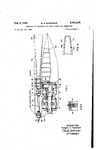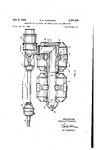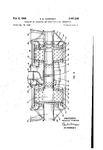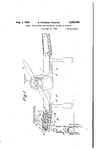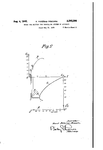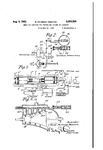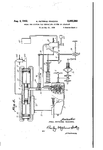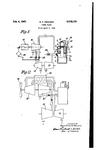Free piston gas generator/exhaust gas turbine powerplants for transport military aircraft were studied in 1930-1940s. This powerplant could work on heavy oil fuels and coal dust, had efficiency of a turbodiesel and relatively low weight.
At 500 mph and altitude 35,000-50,0000 ft calculated range of an aircraft with this powerplant exceeded range of compound compression ignition powerplant by 25%, turboprop by 55%, turbojet by 61% and conventional reciprocating engine by 94%!
Specific weight of the complete installation of the propeller powerplant with 3,000 hp at 50,000ft and 500mph was 2.48lbs/hps for the 1400F drive turbine and 1.83 lbs/hp at 1800F drive turbine inlet temperature.
Frontal area of the low temperature powerplant was 15.5 sq-ft and for the high temperature one - 8.6 sq-ft.
Evaluation of piston-type gas-generator engine for subsonic transport operation
https://digital.library.unt.edu/ark:/67531/metadc58197/m2/1/high_res_d/19930085845.pdf
Experimental study of loop-scavenged compression-ignition cylinder for gas-generator use
https://digital.library.unt.edu/ark:/67531/metadc57964/m2/1/high_res_d/19930085548.pdf
Study of compressor systems for a gas-generator engine
https://digital.library.unt.edu/ark:/67531/metadc58264/m2/1/high_res_d/19930085924.pdf
Study of compressor systems for a gas-generator engine 2
https://digital.library.unt.edu/ark:/67531/metadc58528/m2/1/high_res_d/19930086259.pdf
An analysis of a piston-type gas-generator engine
https://digital.library.unt.edu/ark:/67531/metadc58106/m2/1/high_res_d/19930085742.pdf
Mounting of collector and freepiston gas generators
https://patentimages.storage.googleapis.com/ee/53/15/ae33375fe42a38/US2461245.pdf
Free piston engine of the opposed type
https://patentimages.storage.googleapis.com/ab/81/89/0857007085c724/US2112368.pdf
Power plant by Pescara Raul Pateras
https://patentimages.storage.googleapis.com/64/9c/09/fd16ddcccb9b0a/US2415110.pdf
Means for driving the propelling system of aircraft
https://patentimages.storage.googleapis.com/f8/85/56/3debdbe12f699c/US2292288.pdf
At 500 mph and altitude 35,000-50,0000 ft calculated range of an aircraft with this powerplant exceeded range of compound compression ignition powerplant by 25%, turboprop by 55%, turbojet by 61% and conventional reciprocating engine by 94%!
Specific weight of the complete installation of the propeller powerplant with 3,000 hp at 50,000ft and 500mph was 2.48lbs/hps for the 1400F drive turbine and 1.83 lbs/hp at 1800F drive turbine inlet temperature.
Frontal area of the low temperature powerplant was 15.5 sq-ft and for the high temperature one - 8.6 sq-ft.
Evaluation of piston-type gas-generator engine for subsonic transport operation
https://digital.library.unt.edu/ark:/67531/metadc58197/m2/1/high_res_d/19930085845.pdf
Experimental study of loop-scavenged compression-ignition cylinder for gas-generator use
https://digital.library.unt.edu/ark:/67531/metadc57964/m2/1/high_res_d/19930085548.pdf
Study of compressor systems for a gas-generator engine
https://digital.library.unt.edu/ark:/67531/metadc58264/m2/1/high_res_d/19930085924.pdf
Study of compressor systems for a gas-generator engine 2
https://digital.library.unt.edu/ark:/67531/metadc58528/m2/1/high_res_d/19930086259.pdf
An analysis of a piston-type gas-generator engine
https://digital.library.unt.edu/ark:/67531/metadc58106/m2/1/high_res_d/19930085742.pdf
Mounting of collector and freepiston gas generators
https://patentimages.storage.googleapis.com/ee/53/15/ae33375fe42a38/US2461245.pdf
Free piston engine of the opposed type
https://patentimages.storage.googleapis.com/ab/81/89/0857007085c724/US2112368.pdf
Power plant by Pescara Raul Pateras
https://patentimages.storage.googleapis.com/64/9c/09/fd16ddcccb9b0a/US2415110.pdf
Means for driving the propelling system of aircraft
https://patentimages.storage.googleapis.com/f8/85/56/3debdbe12f699c/US2292288.pdf
Attachments
Last edited:

